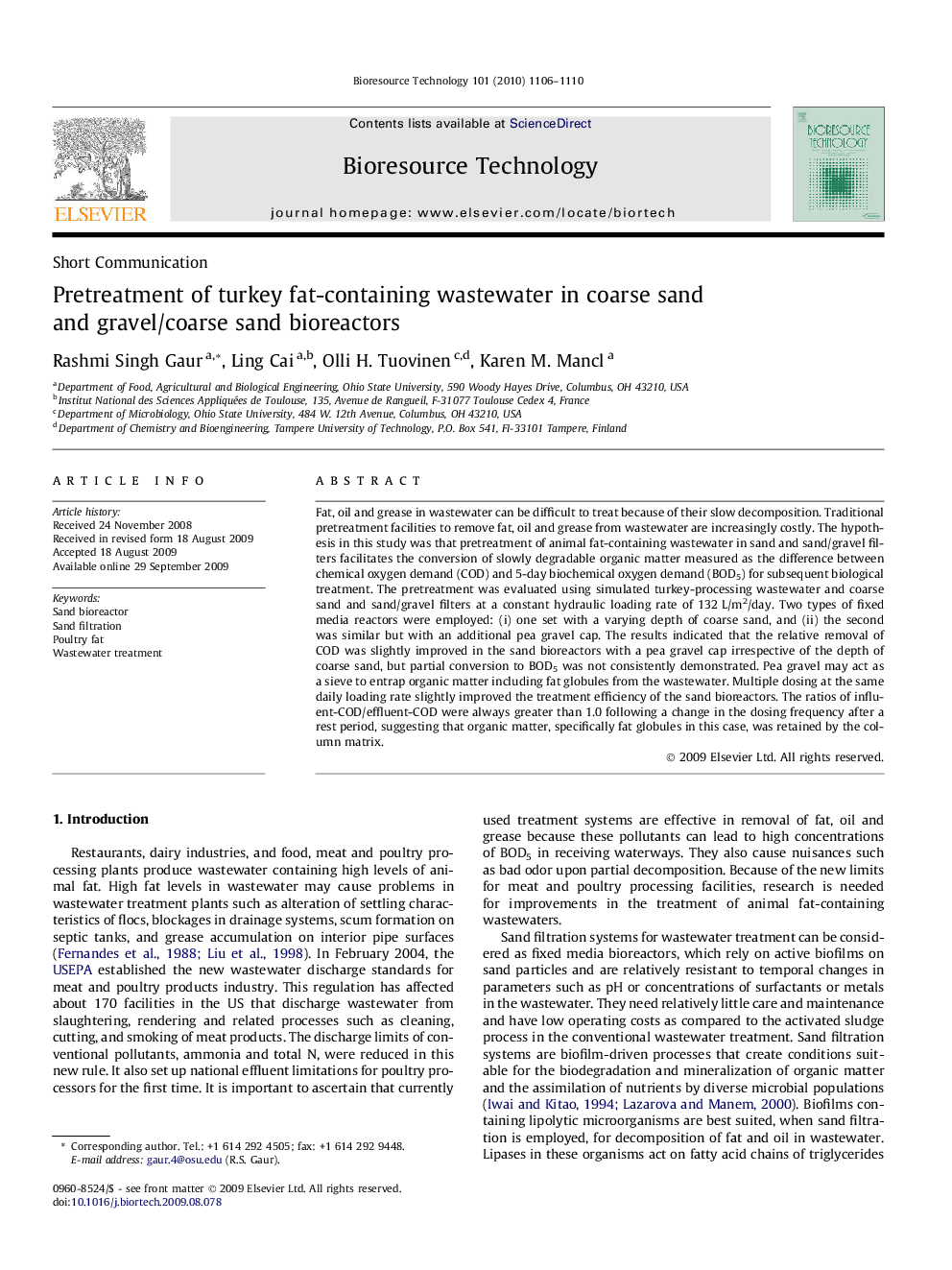| Article ID | Journal | Published Year | Pages | File Type |
|---|---|---|---|---|
| 684085 | Bioresource Technology | 2010 | 5 Pages |
Fat, oil and grease in wastewater can be difficult to treat because of their slow decomposition. Traditional pretreatment facilities to remove fat, oil and grease from wastewater are increasingly costly. The hypothesis in this study was that pretreatment of animal fat-containing wastewater in sand and sand/gravel filters facilitates the conversion of slowly degradable organic matter measured as the difference between chemical oxygen demand (COD) and 5-day biochemical oxygen demand (BOD5) for subsequent biological treatment. The pretreatment was evaluated using simulated turkey-processing wastewater and coarse sand and sand/gravel filters at a constant hydraulic loading rate of 132 L/m2/day. Two types of fixed media reactors were employed: (i) one set with a varying depth of coarse sand, and (ii) the second was similar but with an additional pea gravel cap. The results indicated that the relative removal of COD was slightly improved in the sand bioreactors with a pea gravel cap irrespective of the depth of coarse sand, but partial conversion to BOD5 was not consistently demonstrated. Pea gravel may act as a sieve to entrap organic matter including fat globules from the wastewater. Multiple dosing at the same daily loading rate slightly improved the treatment efficiency of the sand bioreactors. The ratios of influent-COD/effluent-COD were always greater than 1.0 following a change in the dosing frequency after a rest period, suggesting that organic matter, specifically fat globules in this case, was retained by the column matrix.
